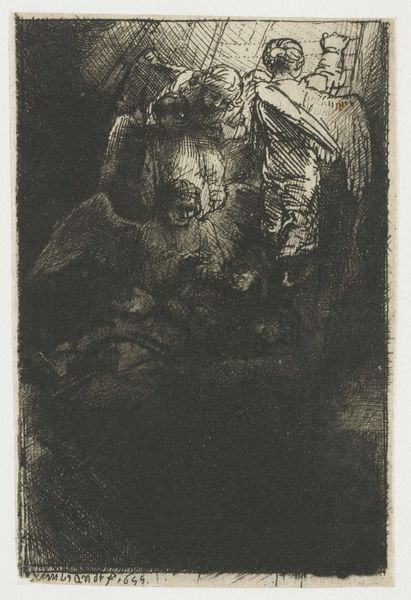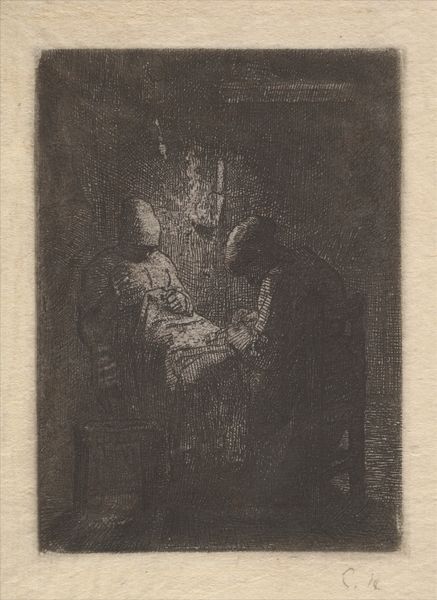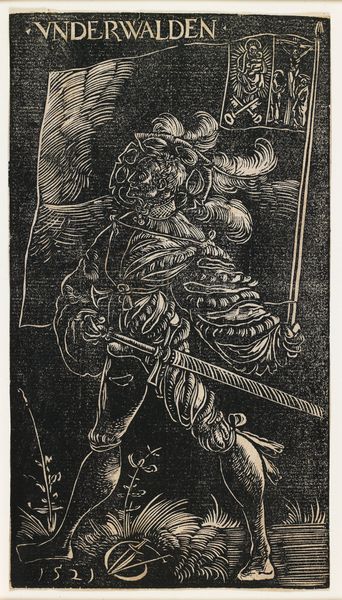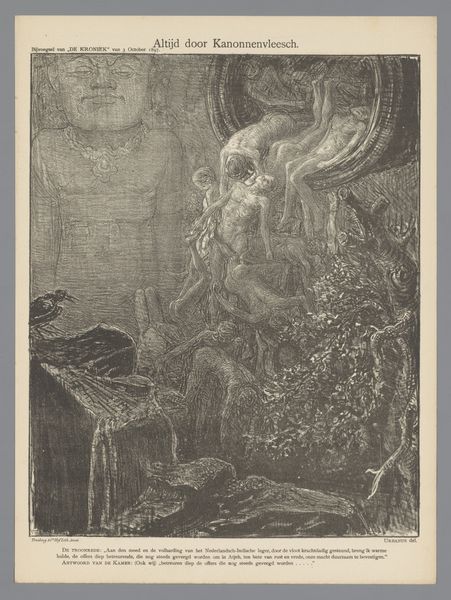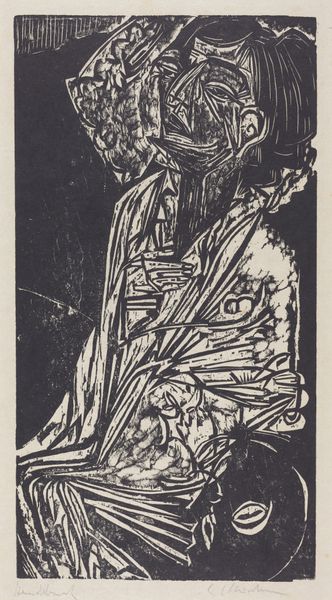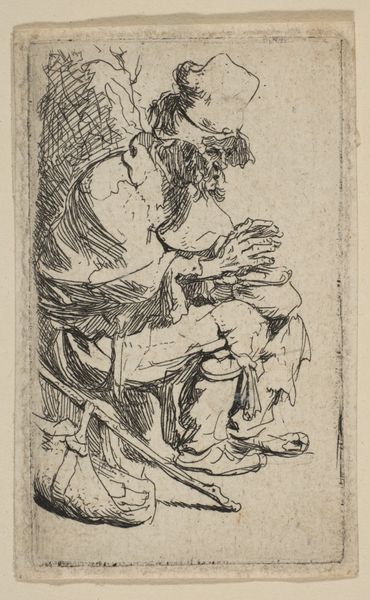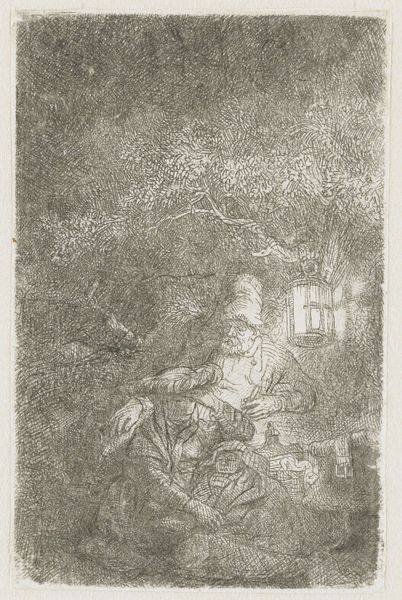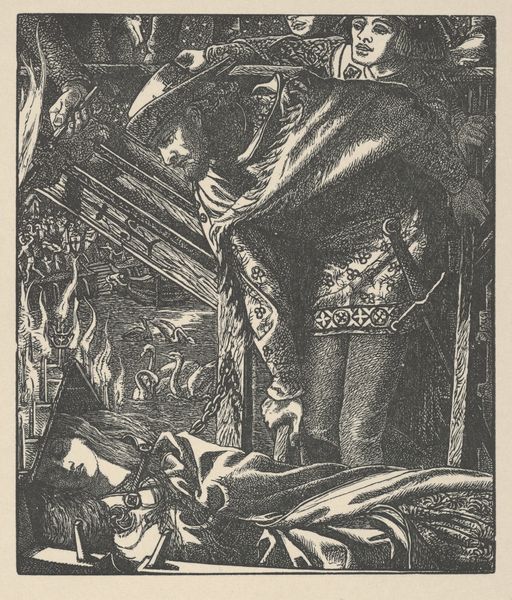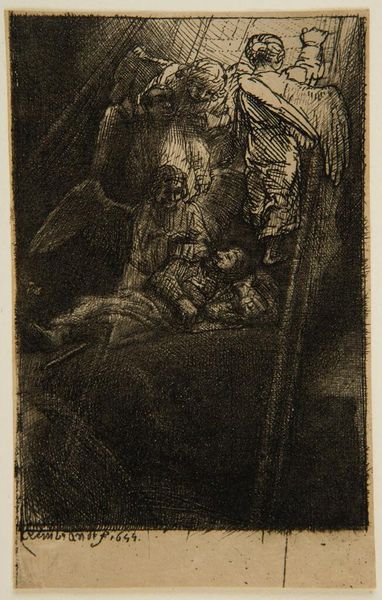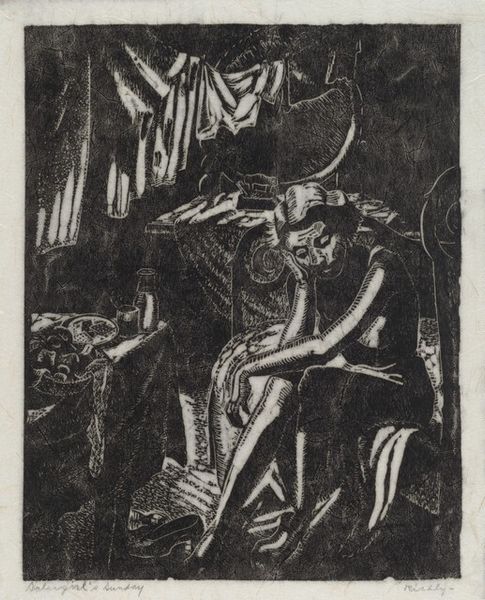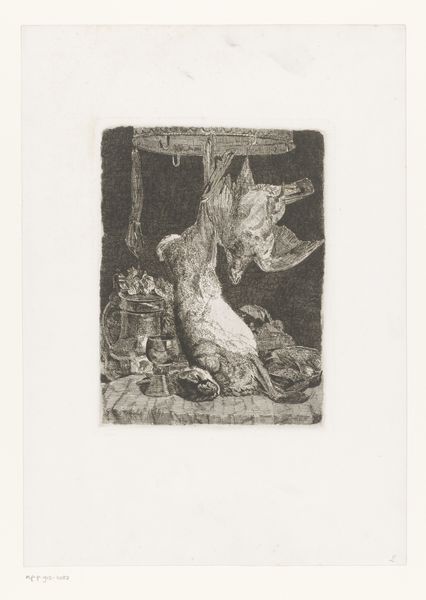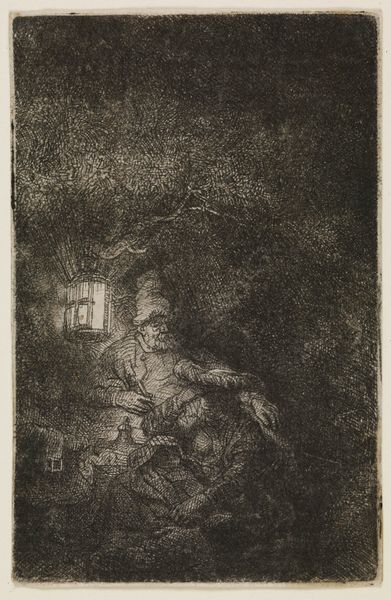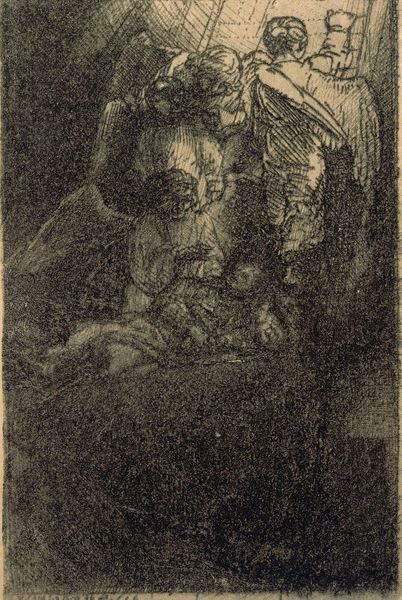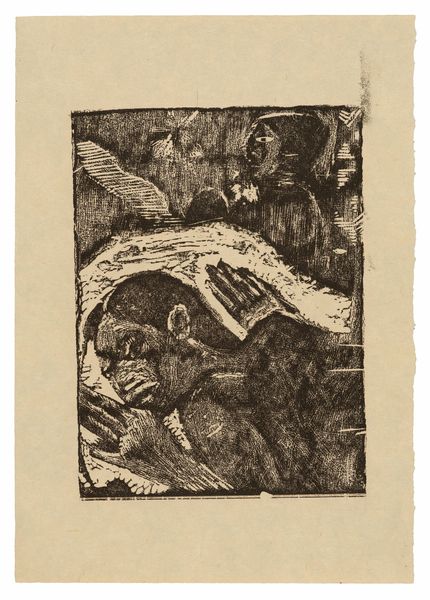
drawing, print, etching, engraving
#
drawing
#
baroque
# print
#
etching
#
figuration
#
personal sketchbook
#
pencil drawing
#
men
#
history-painting
#
engraving
Dimensions: Sheet (Trimmed): 4 5/8 × 3 1/16 in. (11.8 × 7.8 cm)
Copyright: Public Domain
Curator: Looking at this etching, "Jacob's Ladder," crafted by Rembrandt van Rijn in 1655, currently held at the Metropolitan Museum of Art, what springs to mind for you? Editor: There’s an otherworldly yet intimate quality. The swirling lines create a sense of dream and the profound darkness hints at a deeper message, hidden symbols perhaps. It seems at once terrifying and filled with divine possibility. Curator: It's fascinating to consider this print, and how many impressions of it would have been circulating amongst Rembrandt's public. As an etching, the process is rather intriguing – acid biting into the metal plate. We must remember it would be more affordable than his painted works. How would this process of production effect the narrative reach of this particular biblical story? Editor: Indeed, think of the impact of accessibility to visual messaging! Let's look at those angels. Are they traditional winged beings or more human, perhaps messengers in disguise, coming down the ladder to guide or observe Jacob? The ladder itself - isn't it a potent image of spiritual ascension and divine intervention in our earthly lives? It suggests both struggle and grace. Curator: It's intriguing to ponder the artist's intentions behind presenting Jacob’s vision. What textures can be seen from a metal plate? The lines appear very thin. Does Rembrandt employ many laborers within his etching studio? Perhaps he did not perform every line here, every scrape. Editor: But do these concerns take away from what Jacob is experiencing in his slumber, or the potent feeling we might feel about God making direct connection to people? Surely it offers some consolation about being part of the earthly realm! It could indicate our anxieties but also of hope of renewal... Curator: Certainly. The social and economic factors surrounding the making of this print affect how the visual message disseminates throughout 17th century Europe, don't you think? How far it travels depends not only on the iconographic relevance but also the availability of this mode of production. Editor: Perhaps! Looking at it again, it shows that images and their embedded stories often depend on how their makers intended for us to use them as active communicators across many centuries!
Comments
No comments
Be the first to comment and join the conversation on the ultimate creative platform.
